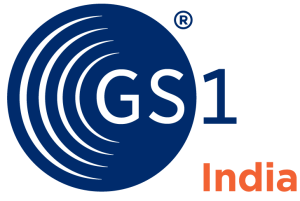India is the largest milk producer in the world contributing to more than 17 percent of the global output. According to Industry reports, milk production was 146.31 million tonnes in FY 2014–15 and demand are likely to reach 200 million tonnes by 2022.
Milk consumption is increasing at about 5 percent per annum and the total expenditure on milk and milk products per Indian family is more than 20 percent. Rising disposable incomes and population growth are the two main dynamics behind the increase in demand.
Today, 80 percent of the milk produced in India is still handled by the unorganised sector whereas only 20 percent is through the organised sector. However, with the Indian retail market expected to nearly double to US$ 1 trillion by 2020 from US$ 600 billion in 2015, and organised retail (modern trade) expected to expand twice as fast at 20 percent per annum, will result in milk and milk products sold through the organised sector to also increase drastically.
One of the ways in which the dairy industry can capitalise on this phenomenal growth potential of the retail market is to ensure they remain competitive by offering quality products and brands. Besides focusing on quality, livestock productivity etc. to scale their business, enterprises should also focus on building their brands and adopting global best practice to improve their supply chain efficiencies. One such area where enterprises can benefit and create a huge impact is by adopting global best practices and standards for barcoding their products. Global standards in barcoding enable high-speed data capture with 100% accuracy eliminating the need for error-prone data entry, they allow seamless compatibility throughout the supply chain and provide numerous benefits to Industry and organisations.
By adopting global barcoding standards companies will be able to not only quickly enter both the export market and organised retail sector (online and offline) but would also be able to build a credible brand image and consumer trust.
Use of barcodes per global standards is essential for entering the export market and to operate in the organised retail sector as several business processes rely on it. Barcodes are fundamental to efficient, streamlined business operations, and enable timely delivery and ready availability of varied products and services to consumers. Barcodes and unique barcode numbers are needed everywhere – from product listing, inventory management, monitoring real-time stocks, generating error-free bills, purchase orders, invoices, etc. to meeting buyer & retailer requirements, and for faster consumer billing at retail stores. This is because barcodes based on global standards, provide unique and unambiguous product identification for products, which is important to accurately identify a product and its related information online/offline.
Moreover, barcodes also improve brand image and give products an international look and feel. They help with product expiry management facilitate product track & trace and recalls, which are being demanded increasingly by regulators for enhanced consumer safety across the world. In India, barcode numbers (unique product identification numbers) based on global standards have been included in the draft Food Safety and Standards (Food Recall Procedure) Regulations 2015 issued by the Food Safety and Standards Authority of India (FSSAI) in May 2015.
How to get started with barcodes based on global standards?
GS1, is the only organisation that sets the standards for barcoding in the world. Its Indian affiliate, GS1 India, a Standards Organisation, set up by the Ministry of Commerce & Industry Govt. of India along with CII, FICCI, ASSOCHAM, FIEO, IMC, BIS, Spices Board, APEDA, IIP promotes the adoption of global barcoding standards in India and assists Indian companies in its implementation.
When organisations contact GS1 India (www.gs1datakart.com), they get 13-digit codes to identify their products. Each product gets its own unique code, even if it is just a different pack size or variant. These unique 13-digit codes help in the unambiguous identification of products and appear under product barcodes.
Along with these unique barcode numbers, GS1 India also provides a service called DataKart, which lets organisations manage their barcode numbers and generate barcode images for their products. Through the DataKart service companies can also share their complete product data with retailers and online shopping websites.
GS1 India also provides training, workshops and assistance to companies to help them with their barcode implementation.
GS1 standards are the most widely adopted supply chain standards in the world and the de-facto standards for the retail Industry. Their adoption/implementation is a prerequisite for doing business with most modern trade retailers and online marketplaces worldwide.
The Indian Dairy Industry is poised to become globally competitive and by adopting global barcoding standards and best practices and by improving the quality of milk and milk products, India has the ability to not only meet the needs of the local population but to also improve its export prospects and capture the International Dairy Market.






